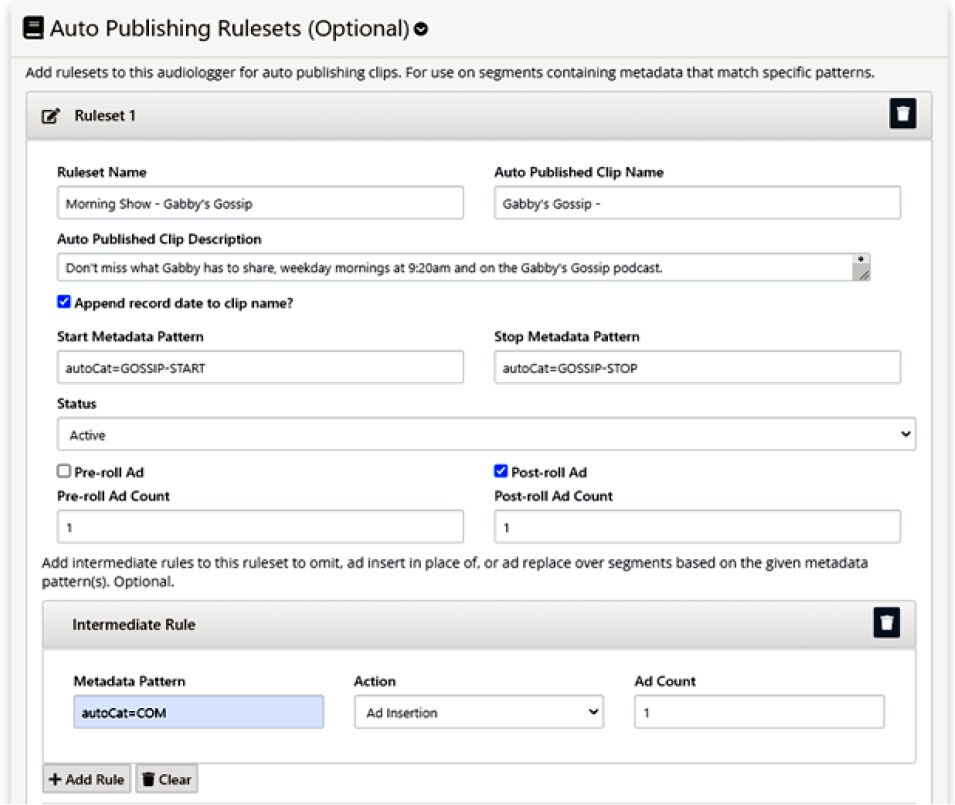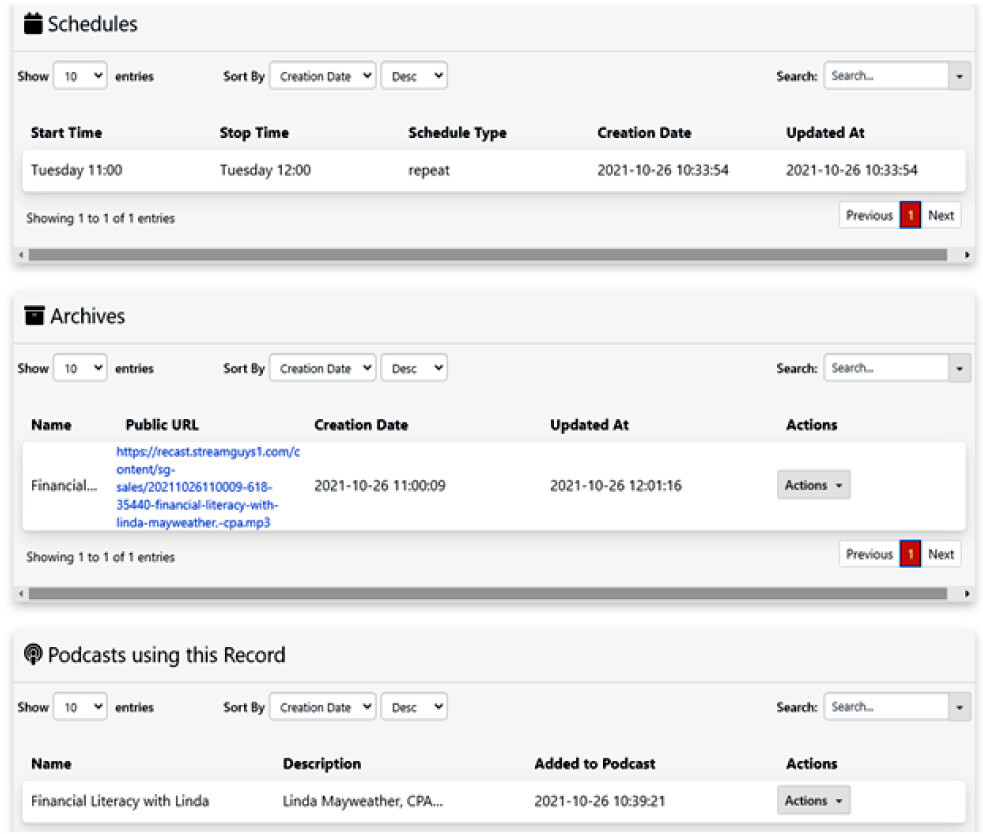Automating Your Podcast Streams

[November 2021] Broadcasting is mostly an “in the moment” medium. The air talent works hard to present an engaging presentation. After the program, it used to be that all that was left was memories. Today, technology has provided a way to get more – sometimes a lot more – use from the program.
Many in radio seem to be talking more and more about the newest innovation in media, the podcast.
We now are seeing a massive, growing audience for podcasts, thanks to compelling content that is available anytime and on any device. Because of this large and engaged audience, producers are actually making money from podcasting, via advertisements in the episodes or through paid subscriptions.
This revenue opportunity will continue to grow. According to a study by research company eMarketer, there will be over half-billion podcast listeners by 2024. Traditional live radio broadcasters should not feel left out: podcasting can be a way for these broadcasters to repurpose and monetize segments of the broadcast day.
MULTIPLE RUNS FROM CONTENT
The concept of reusing existing content with new advertising has been around for a while, but now, broadcasters are adopting podcast delivery and customizing it for mobile players.
It is a good way for a broadcaster to create new revenue with existing talent. The content will also have a longer life – instead of it being gone after broadcast, the podcast can be accessed any time by the audience.
By creating podcasts, they are creating more inventory to advertise on, do not all broadcast companies want more availabilities to sell?
LISTENING AT THE RIGHT TIME
The magic of the repurposing is you are taking content that you already have and are repackaging it for your audience to enjoy at their convenience (time-shifting).
For example, your morning show may have a popular segment.This segment could be the subject of many office water cooler conversations.The conversation is creating the hype and more people want to listen to it. Re-recording the segment after the airing never works – the original excitement is not there!
So, as Howard Cosell used to say: “Let’s go to the tape!”
MAKING IT EASIER
But wait there is more, (no, this is not a Ronco Ad from the seventies) the process of repurposing a broadcast as a podcast can be automated. Let us look at how StreamGuys SGrecast service can do it.
SGrecast is a SaaS (Software as a Service) tool to easily create, manage, and monetize your podcasts. Included in SGrecast are two methods for archiving your live broadcast into a podcast-ready episode: AudioLogger and Side Channel Recording.
AudioLogger
SGrecast’s AudioLogger service continuously records your live stream and has the ability to use in-stream metadata to identify the broadcast segments that are of most interest to you.
Next, predetermined rules can be applied to create an archive file using only the audio segments you want.

The archive file can then be automatically published to a podcast feed. Both the audio file and the podcast feed are updated with program title and description. Broadcast commercials can be removed from the archived audio, leaving behind an ad break marker to support server-side ad insertion of pre-rolls, mid-rolls, and post-roll messaging.
All of this is recording, editing and publishing is performed automatically and in “the cloud.”
Metadata makes this very easy.
Where is this magical metadata? It is being created and sent out of your broadcast playout system.
This is where you get your “Now Playing” information. SGrecast uses the metadata as markers on where to automatically edit. It then auto-publishes the podcast. Yes, this process can be manually done as well, if your station’s metadata is not yet ready for this level of automation.
Side Channel Recording
The question may arise, “how do I create the podcast based on start and stop times, not metadata?”
SGrecast can accomplish this with Side Channel Recording. This works like your parents VCR (but the clock does not blink 12:00). A scheduled recording writes to a new timestamped file.
Each recording can be included in a podcast feed. Recordings can expire from the feed and/or be deleted from SGrecast after a certain time. This can work for video as well as audio-only.

These features of SGrecast will allow you to capture more audience, re-use existing content, and create more revenue opportunities all without additional daily production tasks. And they do not require the station to be using StreamGuys as the CDN, they are available to any broadcaster.
This really is a “set it and forget it” service.
I hope to write about more SGrecast features in future articles.
– – –
David Bialik has been doing broadcast engineering and IT work for over 40 years. You can reach David at: dkbialik@erols.com
– – –
– – –
Would you like to see more articles like this one? If so, please sign up for the one-time-a-week BDR Newsletter. Click here, it only takes 30 seconds.
– – –

